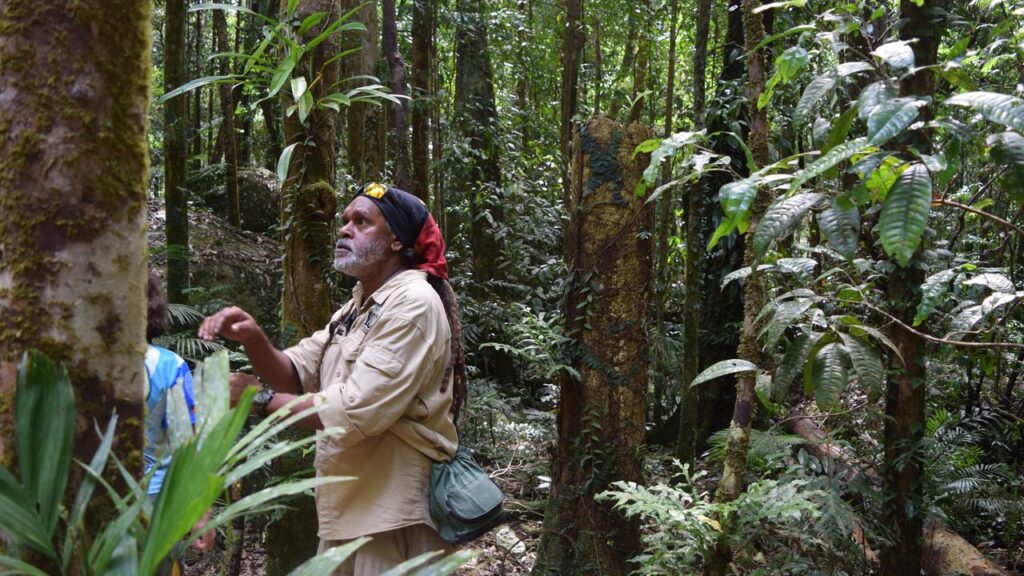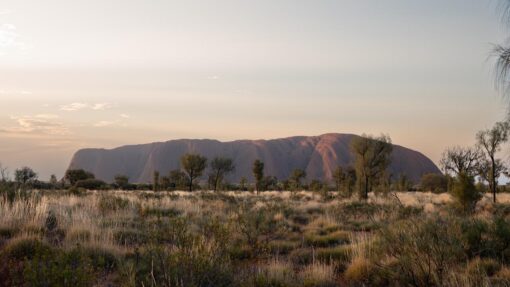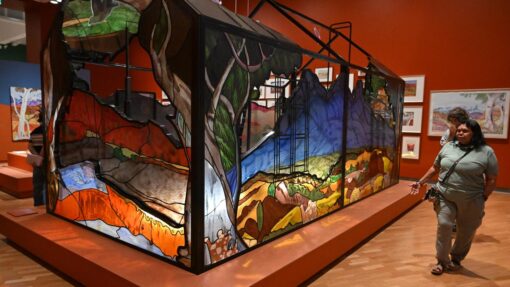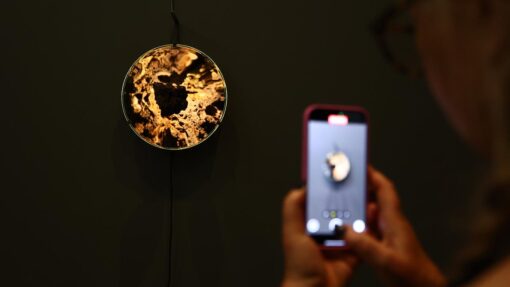Ancient legacy continues as tourism mixes with culture
Keira Jenkins |

Kuku Yalanji people have safeguarded the Daintree Rainforest for thousands of years.
And as hundreds of thousands of visitors flock to experience the natural beauty of the far-north Queensland region, they are continuing that legacy while also creating opportunities for Indigenous communities.
Started by Roy Gibson, a local man with a dream to share culture and help Kuku Yalanji youth, the Mossman Gorge Cultural Centre allows for Indigenous heritage and knowledge to be at the forefront of the tourist experience.
It also helps to protect the UNESCO world heritage-listed landscapes of the Daintree, which is the world’s oldest tropical rainforest.

The centre’s general manager Rachael Hodges, a Goreng Goreng, Girramay, Gunggandji and Kuareg woman, said 500,000 people visited Mossman Gorge each year, creating an opportunity for local self-determination.
Giving young people, who face higher unemployment rates in the region, the chance to get qualified and find employment on Country helps create a path for self-determination for the community.
“The whole vision about this business and the opportunities that it could provide for our local Yalanji people – and people from right throughout the region – is that they are closer to home,” Ms Hodges told AAP.
More than 60 per cent of the centre’s staff are Aboriginal and Torres Strait Islander people.
Yalangda, or Uncle Skip as he’s widely known, is one of the centre’s tour guides, all of whom are Kuku Yalanji people.
“It does give us a bit of a unique thing to give people the history of the area and we talk to a lot of people about it,” he said.
“It promotes our Indigenous youth as well and promotes the culture and spreads it out, because if we don’t spread that culture, we may lose it.”

As Uncle Skip guides visitors through the rainforest, he points out plants used for medicine and bush foods, as well as some to avoid.
He explains the spiritual and cultural significance of the rainforest, shares stories, ancient knowledge and survival skills, and sprinkles in a few jokes as he leads the Ngadiku Dreamtime Walk.
Uncle Skip said he’s been involved in the tourism industry for almost 30 years and led some of the first Dreamtime walks when they were started by Roy Gibson in the late 80s.
The thing that he loves most – and the reason he’s still in the job – is the opportunity to share his culture with visitors.
“I believe a lot of people when they come up north here, especially up to the Mossman Gorge, they really want to know about our people,” Uncle Skip said.
“Sometimes they walk in with an idea but then when they walk out of here they walk out with a new idea … they show a bit more appreciation to having an understanding.”
The centre is operated by Voyages Indigenous Tourism Australia, whose chief executive Matt Cameron-Smith said operating the facility responsibly kept culture strong and protected the environment.
“There’s nothing more ‘made in Australia’ than First Nations culture,” he said.
“It’s building an economy. It’s not about the social side, it’s about the economic side, and actually providing a sustainable contribution to the community.”
While it was also an award-winning ecotourism facility, the cultural centre was a grassroots business with its heart in community, Ms Hodges said.
The deep connection to culture and Country also underpins the centre’s sustainability efforts, with the recent addition of two electric buses to shuttle visitors from the centre to the walking trails among its latest initiatives.

The shuttle buses, named Kurranji (cassowary) and Kurriyala (carpet snake), reflect the community’s desire to protect the environment, Ms Hodges said.
“Indigenous people for 65,000 years have been maintaining a sustainable environment and we’re continuing to do that through the introduction of the two new electric buses,” she said.
“This is something that the community wanted in regards to making sure this world heritage-listed Daintree National Park was kept safe for future generations.”
AAP travelled with the assistance of Voyages Indigenous Tourism Australia.
AAP


